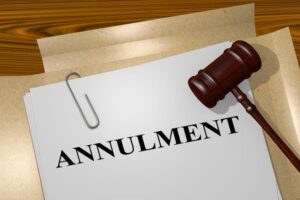Benefits of a creditors’ committee

Creditors in a statutory insolvency procedure should establish a creditors’ committee if they want to influence proceedings, set the basis for the insolvency practitioner’s fees, and increase dividends for the general body of creditors.
A creditors’ committee consists of 3 to 5 people who are responsible for setting the basis of the insolvency practitioner (IP)’s remuneration. Creditors’ committees are essential to the insolvency process, but they empower creditors so IPs tend to avoid them.
Usually, the insolvency practitioner will notify creditors by sending a proposal with resolutions asking them:
- To pay the IP’s outstanding and proposed fees
- Not to form a creditors’ committee
Creditors must vote to either accept or reject the resolutions. Most simply tick the boxes and post the documents back. But few creditors are aware or understand that by voting blindly in this way, they’re telling the IP:
“You are free to charge whatever fees you like. Additionally, we promise not to form a committee to oversee how you work and pay yourself.”
As individuals, creditors have very little control over the insolvency practitioner or their work. But creditors who establish a creditors’ committee get to:
- Determine the IP’s pay package
- Supervise the IP’s transactions
IPs avoid creditors’ committees
Establishing a creditors’ committee is a basic creditor right. Nevertheless, IP resolutions asking creditors not to form 1 have become popular.
It’s a strange situation because although IPs are employed by creditors, they routinely avoid supervision by and accountability to them.
Furthermore, very few creditors realise that forming a creditors’ committee can drastically reduce the IP’s fees. In many cases, the savings allow for creditors to receive a greater dividend, and more quickly.
For example, last year 1 of our clients was owed money by a company that entered administration. The administrator / IP charged over £200,000 for the first 8 weeks of work, and proposed:
- Placing the company into liquidation after 10 months of administration
- Charging a further £200,000 in administration fees
- Charging £200,000 in liquidation fees
In response, Insolvency & Law utilised the power of the creditors’ committee and asked the IP to:
- Reduce their initial £200,000 charge to £120,000 (40% saving)
- Reduce their £200,000 liquidation fee to £100,000 (50% saving)
- End the administration immediately, and place the company into a creditors’ voluntary liquidation (CVL)
This strategy increased the amount paid out to creditors by £380,000. Moreover, the length of time the client had to wait before receiving a payment was drastically reduced.
Understanding the winding up petition: A crucial tool
In the world of insolvency, a winding up petition holds significant importance. When a company has received a statutory demand (SD) and fails to raise…
Read MoreUrgent Call to Action: Have You Invested in Beech Holdings (Manchester) Ltd?
If you or anyone you know has invested in Beech Holdings (Manchester) Ltd, it’s time to take action immediately and get in touch. The Situation…
Read MoreBankruptcy Annulment: A Fresh Start for Financial Recovery
Bankruptcy is often viewed as a last resort for individuals overwhelmed by debt, offering a path to financial relief but also leaving a significant mark…
Read MoreCastle Trust and Management Services Ltd- The Big Problem for the Gibraltar Financial Services Commission
The collapse of Castle Trust and Management Services Ltd (CTMS) has raised serious questions aboutthe role and effectiveness of the Gibraltar Financial Services Commission (GFSC)…
Read More



